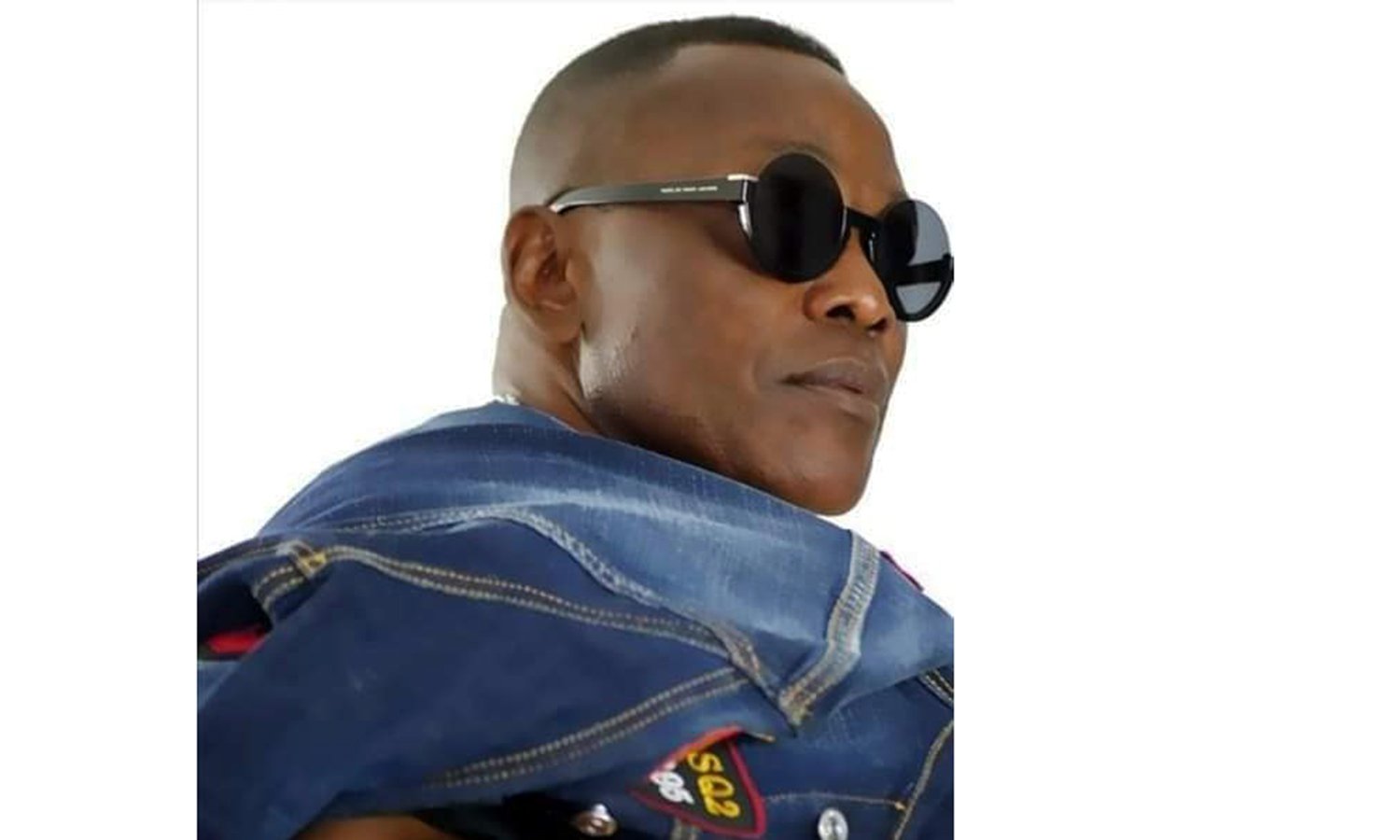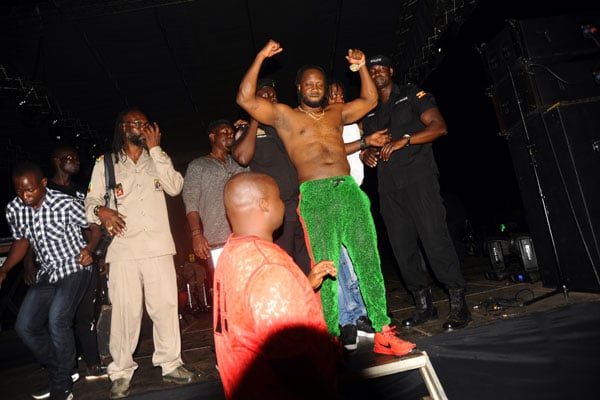Prime
Atalaku: The rubbish that gave Soukous its bounce

Nono Atalaku
What you need to know:
- Started in 1980, atalaku help in the creation of a new music concept called generique and become a distinctive profession within bands.
Rubbish is arguably the most creative juice Congolese music has served its insatiable listeners world over. Yes, rubbish, for that is what atalaku originally meant really.
Started in 1980, this rubbish would save Zaiko Langa Langa from extinction, help in the creation of a new music concept called generique, and become a distinctive profession within bands.
Over the years, the atalaku phenomenon has created jobs for many creative musicians in the two Congos.
Atalaku is a Kikongo word pointing one to “look at” or “focus on.” In music, they are animators who rap short words to whip up the dance floor.
At the tail-end of the 1970s, Ditutala Kwama, Honore Monzuluku Mombele, Bebe Ditutala and a teenage Djouna Mumbafu did rounds with a folklore group, 3Z. The group, under the leadership of Djouna’s elder brother Sabu Mutshatsha, appeared to have wanted to pick on humour to make their mark as entertainers.
Before 3Z, Trio Madjesi of the Orchestra Sosoliso had eaten into fame as a musical rabble rouser who relied on humour to entertain revellers.
Joined by Manzeku ya Mbonda and Clement Yaya Londa, the 3Z folklore group were the typical wags in Kintambo municipality.
“3Z was like a nursery to us where we began music, it was a folklore group – we were doing traditional music but it nurtured us well and I learnt a lot from it,” recalls Djouna.
Born Jean-Pierre Matonet Bileku Mpasi in 1962, Djouna was speaking to Saturday Monitor about his humble foray into music as part of an explainer on the history of the atalaku. It was during 3Z performance that Mombele, who lived the rest of his life until his death on January 12 as Nono Atalaku, would grip his kitshaka tshaka (maracas) and cry out loud, “Atalaku tala, atalaku mama sekete” (Mother watch me, mother see the way I am dancing sekete).
The rubbish struck notes in the ghetto. Atalaku became an adjective describing the sweet rubbish the 3Z spewed.
In 1980, atalaku appeared in common parlance in Kinshasa, turning into a noun that has come to define contemporary Congolese Soukous. They have become such a big deal that debate about which band has the best guitarist has been overtaken by that on atalaku.
From Parabolic Dolce Somono, Mboshi Lipasa, Bill Clinton Kalonji and Celio Scramme to Tutu Caludji, Roberto Wunda Enkokota, Code Niawu and CNN Aligator, atalaku are as good a soul to Congolese music as are the guitars.

Djouna Mumbafu
The Djouna impact
Djouna was a scrawny, lanky teen in Kintambo commune when hope knocked at the door of his misery. In 1980, Empire Bakuba had a show at a joint called Malekia in Kasavubu, a Kinshasa suburb. The Super Jeneusse Aroumbaya, a group formed after Ditutala and Nono had left 3Z to form Bana Odeon, gigged as curtain-raisers.
“At the end of the concert, Pepe Kallé asked my elder brother to call me so that he would congratulate me for my impressive performance that evening,” recalls Djouna, adding, “Pépé Kallé asked me, ‘young man, when are you joining Empire Bakuba?’ I was still under 18.”
A designer of Kuba tapestry, Pepe Kallé had the eyes for talent who brought the flavour of everyday life to music. Empire Bakuba, formed March 17, 1973, needed to up their creativity in the highly competitive music industry.
When Nono and Bebe joined Zaiko, and Kwama took shelter at Choc Stars, Pepe Kallé did not waste any more time. He dispatched Londa, who had just joined Empire Bakuba, to settle Djouna’s commitment.
While Zaiko is credited with the introduction of atalaku in Soukous, it was Empire Bakuba that owned the game with Djouna’s industry and dance and timeless wit.
Djouna’s animation tact involved mabanga (flattery) for people who supported Empire Bakuba such as Pepe Kallé’s Mulumba tribe-mate Guy Guy Bokwana, or anyone who caught his fancy such as Cameroonian football legend Makanaki or Tyty Etsaya, son of his village-mate, and Mayidoda, his childhood friend.
But his best lines were reserved for the band’s dancers.
“Maman na belaka, Chérie na belaka, Maman na belaka Mokongo pasi, Libumu koloba te, Pesa nga kiti na vandaka, Pesa nga kiti na me repose.” It’s a classic chant in songs like Mama Leki Ndaya and Devise Par Deux that translates as “Darling I’m feeling unwell, my back is hurting, bring me the chair I want to sit, bring the couch I want to rest.”
Djouna uses the chant to encourage the dancers to mimic back pain.
Djouna’s ultimate fulfilment came in 1989 when Pepe Kallé introduced ‘générique’ style of music with his hit, Pon Moun Pak Bouge. The generique had non-stop sebene—where the audience is invited to dance from the beginning to the end of the song.
The style that took wind with Soukous bands, was helped by Djouna’s industry and Diblo Dibala’s lead guitar. While Djouna did not take part in the original recording of the song, he provided the rap lines.
He mocked everyday life, shouting in Kikongo: “Matoko ma Kinshasa muna poche, elokote kaka monoko nalingi yo ya Bileku eh, eh Tity eh Tsaya.” (Kinshasa men are broke, they have nothing other than the mere words ‘I love you’).
The 9.30-second song is complete with a caesura (where a song pauses completely). The abrupt death of instrumentals is filled by Pepe Kallé belting out “sakaï” (asking the audience “is it cold?” and they respond “yes it’s cold).
“Without knowing it and without wanting it, Pépé Kallé’s improvisation would create “the credits,” says Norbert Mbu-Mputu, a UK-based Congolese journalist, writer and researcher.
Several Soukous albums such as Solola Bien (Werrason), Internet (JB Mpiana), and Attentat (Koffi) took after Pepe Kalle’s opus.
Techno-Soukous like Awilo’s Coupe Bibamba all picked up from Pepe Kalle.
“With the credits, atalaku have been propelled to the forefront of the stage,” Mbu-Mputu writes in his paper, “The mabanga phenomenon or dedications in Congolese music.”
“It is their cries that make the dance steps change, certainly assisted by the instrumentalists. With the credits, the animators become artistes and important people.”
Djouna’s exploits with Empire Bakuba gave atalaku their due credits on album sleeves. From merely filling in at the bridge, raps started becoming part of the song itself, like how Awilo Longomba fused his chants for promoter Tamukati Dongala in Gate le Coin.
Many Congolese musicians, including Koffi Olomide, have over the years dabbled in rave animation in their songs.
“Yes, I’m the animator who created the opportunity and set the trend for many atalaku,” Djouna told Saturday Monitor.
“Therefore, I’m the father of animation.”
The Djouna phenomenon
Pepe Kalle gave Djouna the freedom to express himself and he went as far as composing songs such as Santa Bukasenga, Pesa Wax, Que C’est que l’Amou’r and Keba na Mopepe.
“I toured with my own band before any other atalaku,” Djouna says.
“I was the first atalaku to be chef d’orchestre. I revolutionised animation to the point that animators are now valued.”
After Pepe Kallé’s death in 1997, Djouna formed Delta Force with Lofombo before going solo and releasing the Tonnerre de Brest album in 2003. It won Djouna the Best Male Central Africa nomination at the Kora Awards in 2004.
Muinto Obrigado is not your conventional Congolese Soukous song. It takes off with Djouna belting out chants in praise of Congolese dance forms.
From Kwassa-Kwassa, he goes onto Isenkele and then Mayeno, the latter enjoyed by dwarf dancer Dominique Mabua. He closes the intro chants with praise for bassist Godesy Lofombo.
There would be more chants in the outro.
A strange arrangement but this was 1992, Djouna had already earned his stripes. The young man Pepe Kallé had personally begged in 1980 to add life to Empire Bakuba was no longer a mere atalaku.
Papy Tex, who composed the song, told Saturday Monitor that he needed more creativity and Djouna came in handy.
At Empire Bakuba, Djouna was everything. He was an animator, a dancer, a composer, a singer and percussionist. And he was a wag who nicknamed band members.
Didier Beze Wakenze still lives as Dominigue Mabua, few know Josephine Makumbundu because Djouna called her Jolie Bebe, Pauvre Ayila Bin Tumba became Emoro, Soliste Papillon lived as Rols Mateta, and Godesy Mbemba Ndombasi still plays his guitar as Lofombo.
There were others he named Chocolate, Ekwata, Bon Appetit...
“My favourite concert was the first one we had at Cirque d’Hiver in Paris circa 1985/86,” Djouna said.
There is no price for guessing his worst. In 1992, Empire Bakuba had a concert in Gaborone, Botswana, when their trailblazing dwarf dancer Emoro died.
“Emoro did not die on the podium, his death didn’t occur during the concert as has been wrongly speculated,” Djouna said.
Emoro began to feel unwell after having fun at a night club. He had called Djouna at 1am to complain of discomfort. Then, at around 5.30am, he sent for Djouna.
“He had muscle pain on his legs,” he said.
Emoro, who had bow legs typical of dwarfism, had always had similar pain. But this was worse even after an anti-inflammation ointment was applied to it.
“I went and applied Voltarene ointment on his legs but the pain persisted and we had to rush him to hospital in Gaborone where he died around 3pm.”

Bebe Atalaku
Where are they?
Of the pioneer atalaku, little is known of Bebe. Djouna lives with his wife Chantal Bukasenga and five children in the UK, Nono passed away earlier this month while Wenge Musica’s Enkokota is battling throat cancer in France.
A younger school of animators took over, with Tutu Caludji in particular standing out as the man who made Wenge move on from Enkokota after he joined in 1993.
His rhythmic style of sung animation would help in Wenge’s highly successful Pentagon and Titanic albums.
Mboshi Lipasa’s impact at Koffi Olimidde’s Quartier Latin could be compared to Viva La Musica’s Al Patchino. Born Nsimba Lufekwenda, Alpacino, who died in 2009, helped uplift Papa Wemba’s music during the Ndombolo era.





